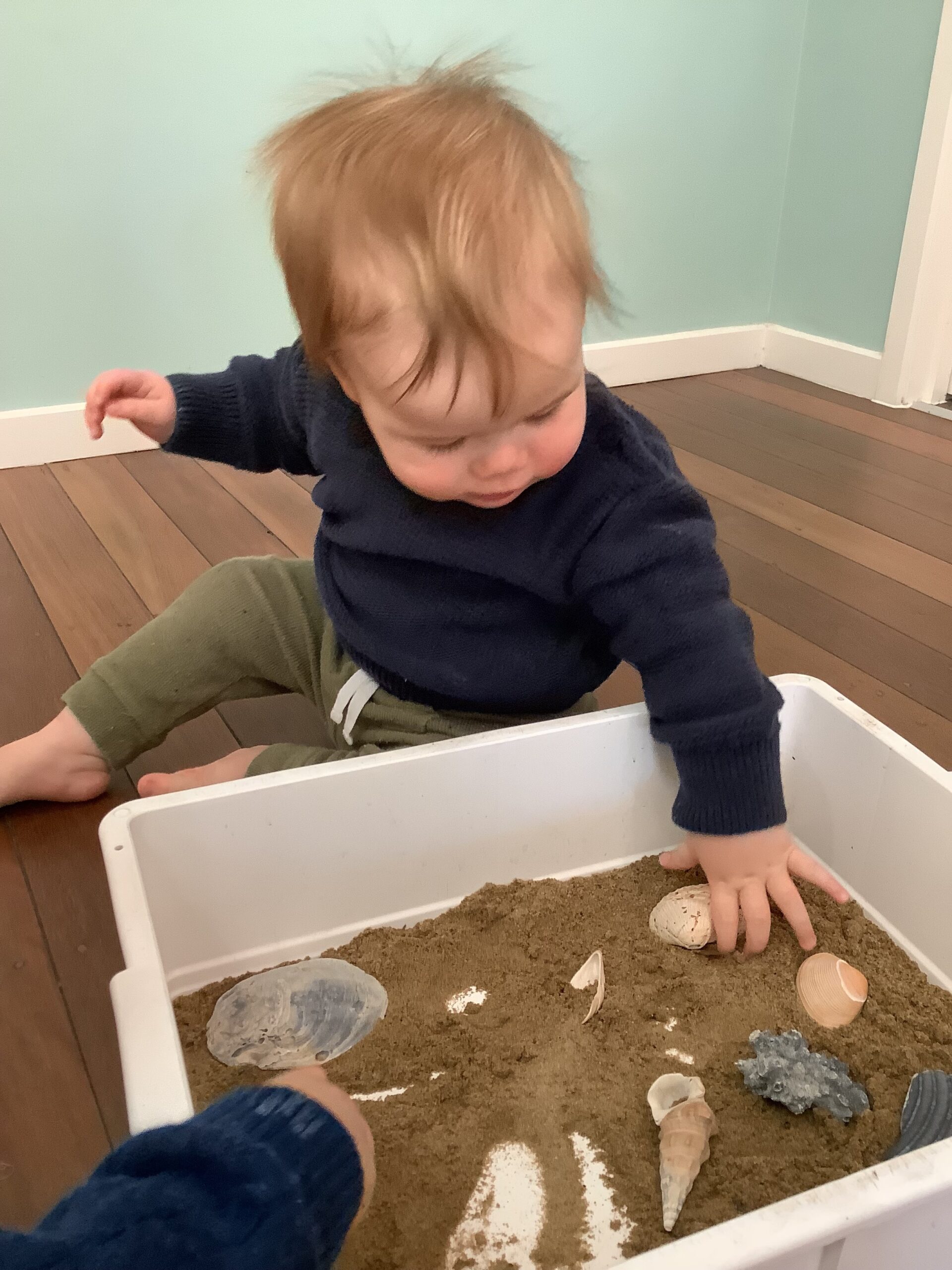Touch and texture helps to expose children to the world around them. It enables them to experience and gain an understanding of what objects are and what they feel like by exploring various shapes and textures.
Through texture play, children get to know what feels sticky, prickly, silky and fluffy and experience how this feels against their skin. Well before they’re able to verbally communicate it children learn about and develop preferences around different textures and tactile sensations.


Benefits
Playing with and learning about texture has many benefits across a range of developmental areas, including:
Communication & Language Acquisition
At a very young age, children’s ability to communicate is limited. Toddlers may only know how to say a few words, yet they are surrounded by a multitude of different objects, materials and surfaces. Texture offers a pathway for parents to provide unique linguistic input.
For instance, a parent dressing a child might say “That jumper feels so soft and fluffy on your skin. Can you touch the jumper? It’s soft”. This helps children to associate fluffy textures with softness. By interacting with different textures, children can further develop their understanding of the world around them. They can touch, interpret and engage with objects, and in turn, learn how to communicate and share their experience of them.
Development of motor skills
Learning through texture also helps to strengthens a child’s motor skills. For instance, gripping, holding, squeezing, stacking, poking, pouring or scooping items of various textures helps children strengthen the muscles in their body. It also helps them to gain better fine motor control as different amounts of pressure and dexterity is require for items that are slippery, soft, hard or sticky.
Observation & Cognitive Skills
By experiencing, analysing, feeling and describing different textures, children also work on their attention, observation and concentration skills. When a child focuses on one particular object, material or surface this may also encourage mindfulness and be calming for young children. Children are highly sensitive to tactile sensory input given so much of their world relies on their physical experience of it (rather than the more cognitively demanding experience of adults).
Reduce Picky Eating
Research shows that regular sensory play increases children’s willingness to try new food. Fruits and vegetables are prone to change, either due to ripening or as a result of how they’re cooked. By exploring different textures and tactile sensations during Sensory and Messy Play, including playing with the natural textures of fresh foods, children gain the experience and confidence needed to later try these foods at the dinner table.
Children who struggle with picky eating need a minimum of 10 exposures to a new food before they feel safe to try eating it. Sensory/texture play with food can offer the child with an opportunity to explore touching, smelling and playing with the new food in an environment without the expectation that they will have to eat it. This takes the pressure off and allows them to explore with drastically reduced anxiety levels. As the child develops trust and understanding of this texture it helps build positive pathways in the brain to say it is safe to engage with this food.


How you can incorporate texture play into your daily activities
Books
Many books, especially for young children, incorporate features such as rough surfaces, smooth pictures, shiny images and fluffy elements. Playing with and reading the book together can help children learn to associate texture words with the things they represent.
Food
The kitchen is one of the best environments for helping children to learn through texture. Sit them in a high chair and supervise them while they explore the texture of food in their hands. It’ll be messy, but go ahead and let them dig their hands into banana, yoghurt, mashed vegetables and rice. If you find the mess especially off-putting you can try doing this activity in the bathtub or shower!
In the garden
Use your outdoor space so that your children can interacting with nature. Twigs, rocks, mud, leaves, sand, and wet grass are fascinating textures. The breeze, droplets of rain and the warmth of sunshine are all important sensations to experience too. Bush Kindy at Little Locals offers the perfect environment for exactly this type of experience.
For all the reasons above, learning through texture is very important. Children need to be exposed to a multitude of textures, being allowed to get dirty through as much ‘messy play’ as possible, and being supervised with all manner of objects so they can learn to better understand and appreciate the world around them.
Source: @science_minded
If you are interested in learning more about sensory play or other evidence play research, visit Dr Siobhan Kennedy’s website to discover more https://www.scienceminded.org/





Social Contact